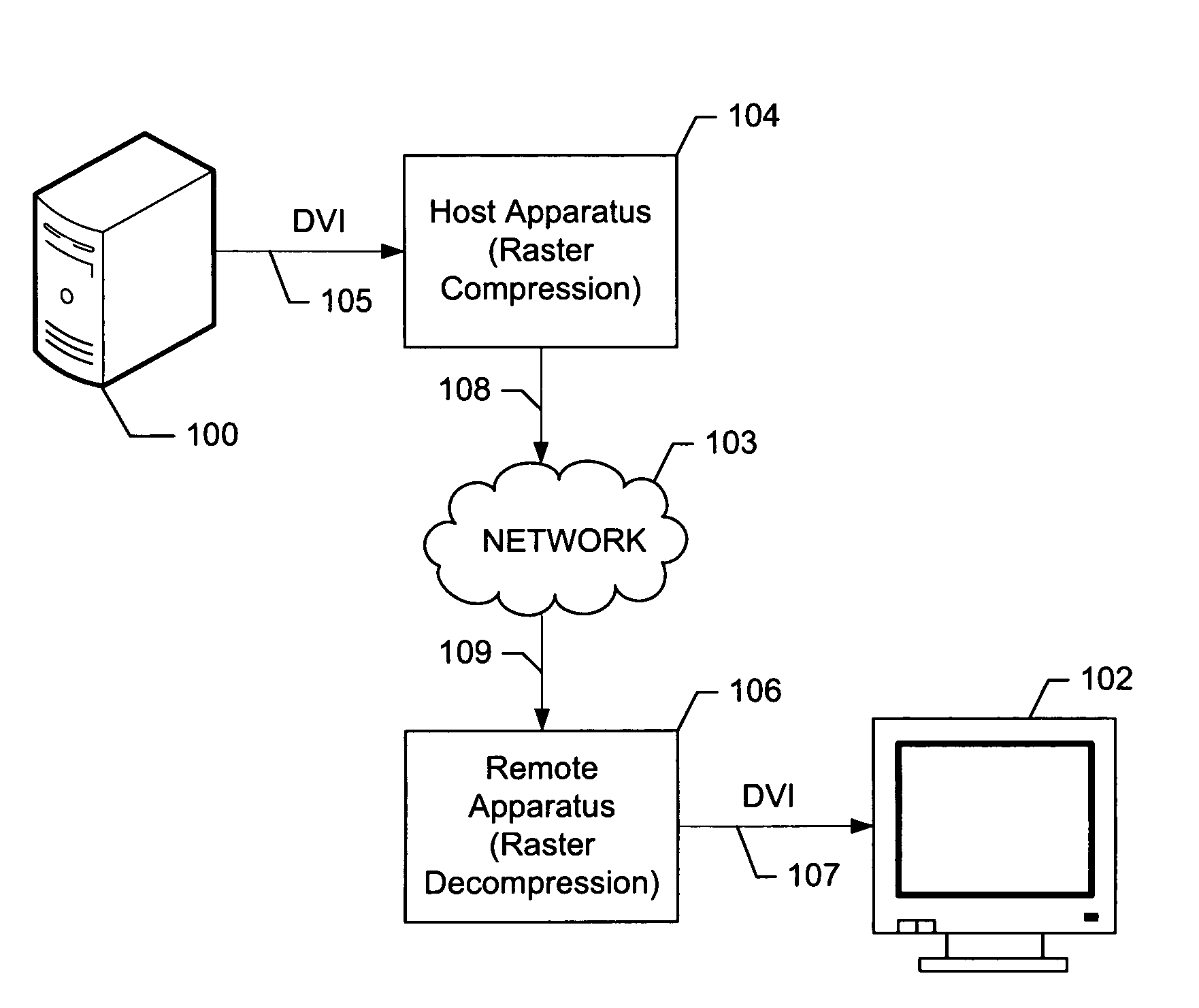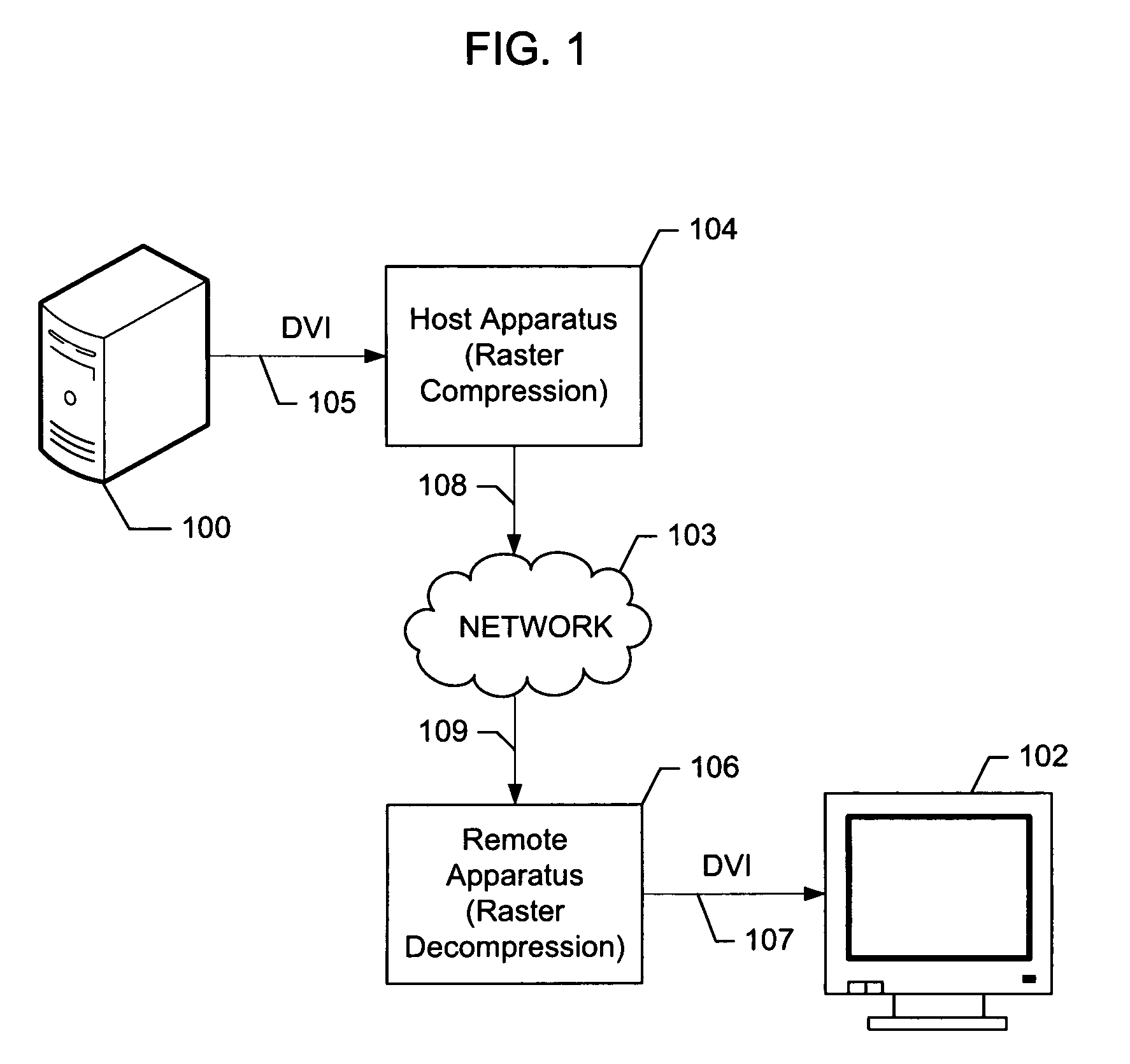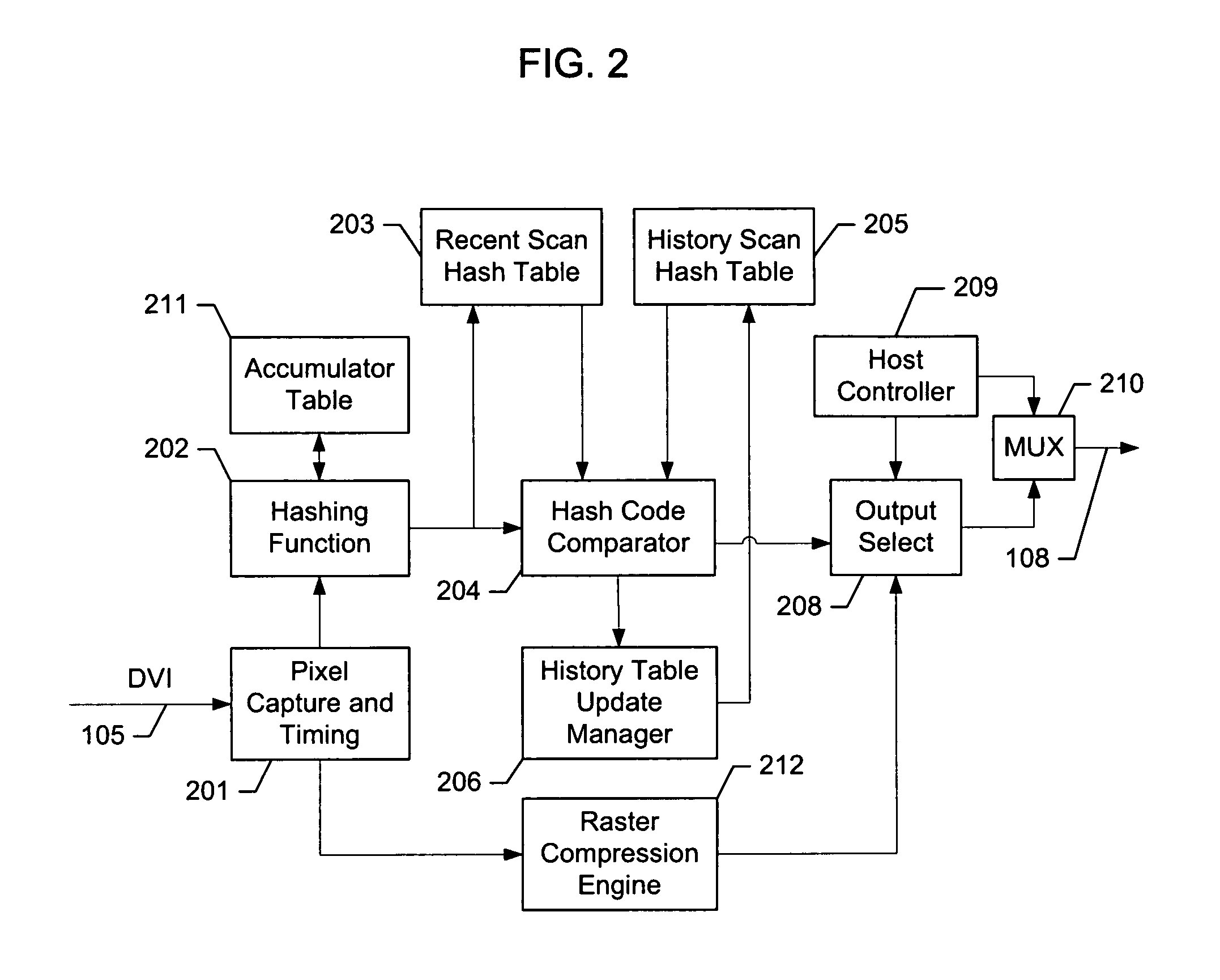Methods and apparatus for scan block caching
a scan block and cache technology, applied in the field of methods, can solve the problems of not being applicable to video and digital graphics, none of the compression algorithms that take advantage of the recurring history pattern, and the power of personal computers, etc., to achieve the effect of efficient transmission of graphic display signals, reducing the required bandwidth and resulting latency of a remote display, and high probability of re-us
- Summary
- Abstract
- Description
- Claims
- Application Information
AI Technical Summary
Benefits of technology
Problems solved by technology
Method used
Image
Examples
Embodiment Construction
[0025]FIG. 1 provides a system-level illustration showing the context of the invention. A data processing system 100 is connected to a remote display 102 via a transmission network 103. The invention itself is comprised of two components inserted in the communications path between data processing system 100 and remote display 102. The first component is raster compression apparatus 104 that connects to display output signal 105 of data processing system 100 and is located at the data processing side of network 103. This component is referred to herein as the “host apparatus.” The second component is raster decompression apparatus 106 that connects to display input signal 107 of remote display 102 and is located at the remote display end of network 102. This component is referred to herein as the “remote apparatus.”
[0026]In the preferred embodiment, display output signal 105 from data processing system 100 is a Digital Visual Interface (DVI) digitized raster signal. In alternative em...
PUM
 Login to View More
Login to View More Abstract
Description
Claims
Application Information
 Login to View More
Login to View More - R&D
- Intellectual Property
- Life Sciences
- Materials
- Tech Scout
- Unparalleled Data Quality
- Higher Quality Content
- 60% Fewer Hallucinations
Browse by: Latest US Patents, China's latest patents, Technical Efficacy Thesaurus, Application Domain, Technology Topic, Popular Technical Reports.
© 2025 PatSnap. All rights reserved.Legal|Privacy policy|Modern Slavery Act Transparency Statement|Sitemap|About US| Contact US: help@patsnap.com



